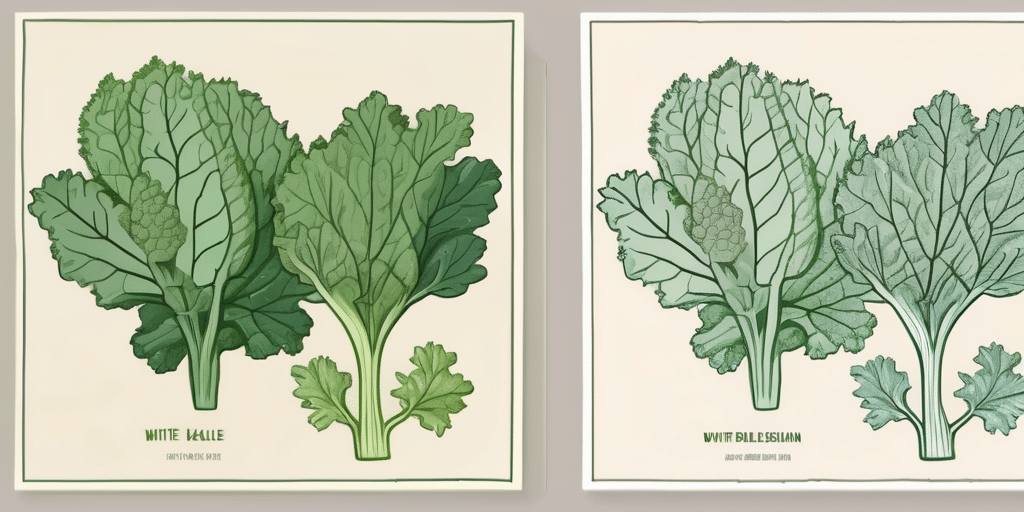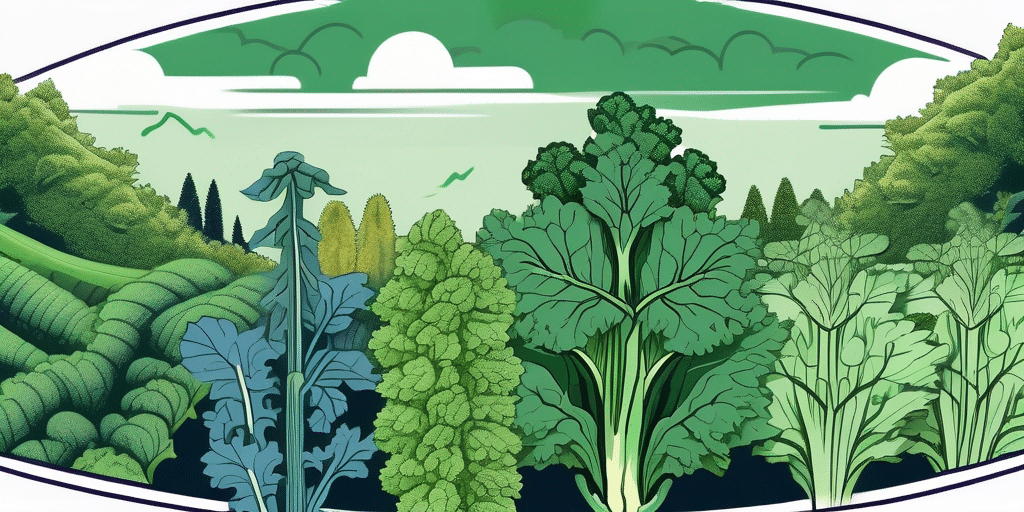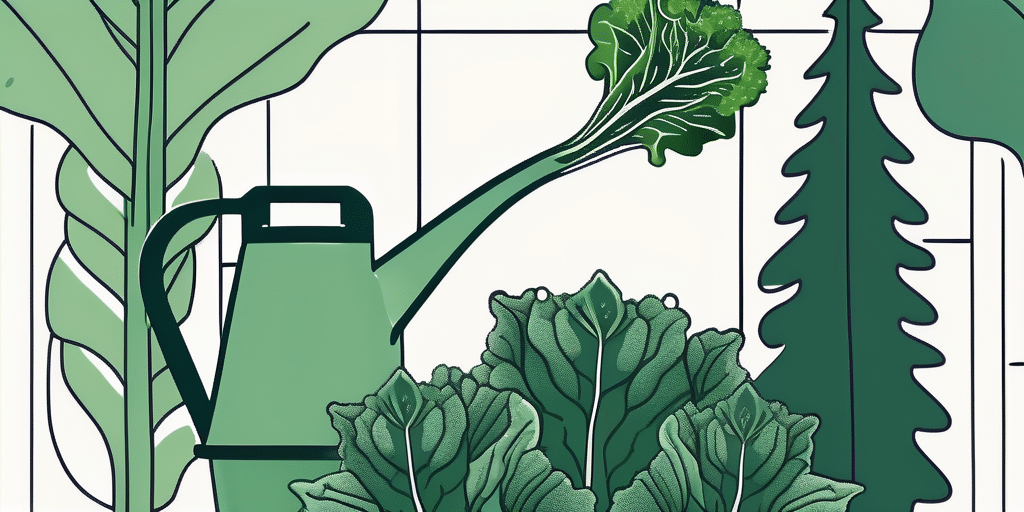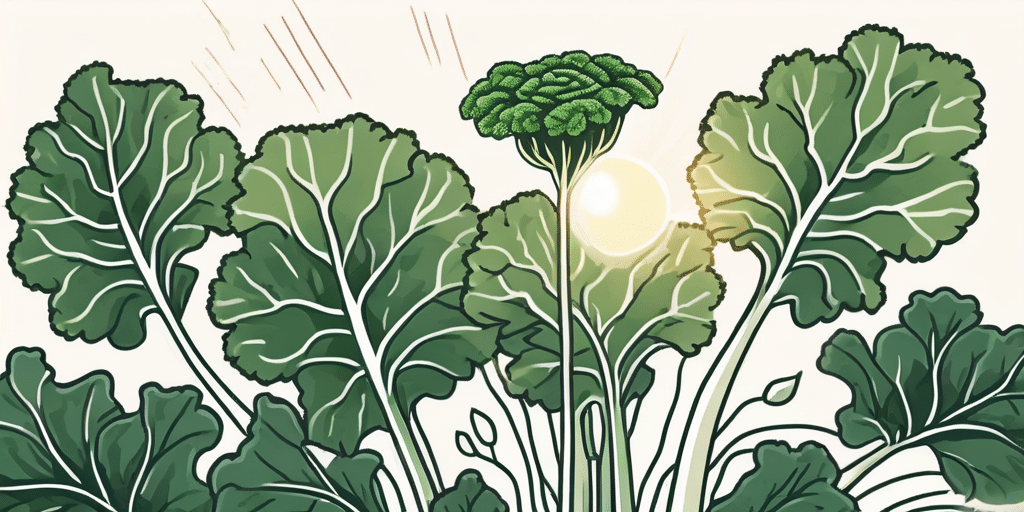Red Ursa Kale is a beautiful and nutritious vegetable that can thrive in zones 8a and 8b. If you live in these regions, you’re in luck! In this article, we will discuss everything you need to know about growing Red Ursa Kale, including when to plant it and how to take care of it.
Growing Red Ursa Kale in Zones 8a and 8b
Growing Red Ursa Kale in zones 8a and 8b is not as challenging as it may seem. With the right knowledge and techniques, you can easily enjoy a bountiful harvest of this delicious vegetable. Let’s explore the important aspects of growing Red Ursa Kale in these zones.
Climate & Hardiness in Zones 8a and 8b
Before you start growing Red Ursa Kale, it’s essential to understand the climate and hardiness conditions in zones 8a and 8b. These zones are characterized by relatively mild winters and warm summers. This makes them ideal for growing a wide variety of crops, including Red Ursa Kale.
Red Ursa Kale is known for its cold tolerance, and it can withstand temperatures as low as 15°F (-9°C). However, it’s important to protect the young plants from frost during the winter months, as extreme cold can damage them. Consider using row covers or cloches to shield the plants from freezing temperatures.
When to Plant Red Ursa Kale in Zones 8a and 8b
Knowing the right time to plant Red Ursa Kale is crucial for a successful harvest. In zones 8a and 8b, the best time to plant Red Ursa Kale is in the early spring, once the soil temperature reaches around 45°F (7°C). This usually occurs in February or March, depending on the region.
It’s worth noting that Red Ursa Kale can also be planted in the fall for a late harvest. If you choose to plant in the fall, make sure to do so at least eight weeks before the first expected frost date. This will give the plants enough time to establish strong roots before the cold weather sets in.
When to Harvest or Pick Red Ursa Kale in Zones 8a and 8b
If you want to enjoy the full flavor and nutritional benefits of Red Ursa Kale, harvesting at the right time is crucial. In zones 8a and 8b, Red Ursa Kale can be harvested throughout the year, providing a continuous supply of fresh and healthy greens.
You can start harvesting the outer leaves when they reach about 6-8 inches in length. It’s important not to strip all the leaves from the plant but to allow the inner leaves to continue growing. This will ensure a continuous supply of fresh and tender kale leaves, perfect for adding to salads, stir-fries, and smoothies.
Remember to harvest the leaves in the morning when they are at their freshest and most flavorful. Simply cut the leaves with a sharp knife or scissors, leaving the central growing point intact. This will encourage new growth and ensure a longer harvest season.
With these tips in mind, you’re well-equipped to grow Red Ursa Kale in zones 8a and 8b. Enjoy the process of nurturing these vibrant plants and reap the rewards of a homegrown, nutrient-rich crop!
Frequently Asked Questions
1. Can I grow Red Ursa Kale in containers?
Yes, you can definitely grow Red Ursa Kale in containers. Make sure to choose a container that is at least 12 inches deep and has good drainage. This will allow the roots of the kale plant to grow deep and establish a strong foundation. Additionally, using a container with good drainage will prevent water from pooling at the bottom, which can lead to root rot and other issues.
When selecting a potting mix for your container, opt for a well-draining one that is specifically formulated for vegetables. This type of mix will provide the necessary nutrients for your Red Ursa Kale to thrive. It’s always a good idea to add some organic matter, such as compost or aged manure, to the mix to further enrich the soil.
Once you have your container and potting mix ready, find a spot that receives at least 6 hours of sunlight per day. Red Ursa Kale loves sunlight and needs it to grow and develop its vibrant red leaves. If you don’t have a sunny spot, you can also use grow lights to supplement the natural light.
2. How often should I water Red Ursa Kale?
Red Ursa Kale needs consistent moisture to grow well. While it is important to keep the soil moist, it’s equally important to avoid overwatering, as this can lead to root rot and other problems. The best way to determine when to water is to check the moisture level of the soil.
A good rule of thumb is to water deeply once a week, or more often during dry periods. This will ensure that the water reaches the roots and encourages healthy growth. To check if your Red Ursa Kale needs watering, stick your finger about an inch into the soil. If it feels dry at that depth, it’s time to water.
Remember, it’s always better to underwater than to overwater. If in doubt, it’s safer to wait a day or two before watering again.
3. Can I freeze Red Ursa Kale?
Yes, you can freeze Red Ursa Kale to enjoy it later. Freezing is a great way to preserve the freshness and nutritional value of this leafy green. To prepare your kale for freezing, start by blanching the leaves.
Blanching involves briefly immersing the leaves in boiling water, followed by a quick plunge into ice water. This process helps to retain the color, texture, and flavor of the kale while also destroying any enzymes that can cause deterioration during freezing.
To blanch Red Ursa Kale, bring a pot of water to a boil and add the leaves. Let them cook for 2-3 minutes, then remove them and immediately transfer them to a bowl of ice water. Once the leaves are cool, gently squeeze out any excess moisture.
Next, pack the blanched leaves into airtight freezer bags or containers. Make sure to remove as much air as possible to prevent freezer burn. Label the bags or containers with the date and place them in the freezer. Frozen Red Ursa Kale can be stored for up to 12 months.
4. Are there any pests that commonly affect Red Ursa Kale?
Red Ursa Kale, like other members of the brassica family, can be susceptible to certain pests. Common culprits include aphids, cabbage worms, and flea beetles.
To protect your Red Ursa Kale plants from these pests, there are several organic pest control methods you can employ. One effective method is to spray a mixture of water and insecticidal soap directly onto the leaves. This solution suffocates the pests and prevents them from causing further damage.
Another natural approach is to plant companion plants that deter pests. Marigolds and nasturtiums, for example, are known to repel aphids and other harmful insects. By interplanting these flowers with your Red Ursa Kale, you create a natural barrier that can help keep pests at bay.
Regularly inspecting your plants for signs of pest activity is also crucial. Early detection allows you to take action before the infestation becomes severe. If you notice any pests, manually remove them or use a gentle spray of water to dislodge them from the leaves.
Now that you have all the information you need, it’s time to start growing Red Ursa Kale in your zones 8a and 8b garden. With the right container, proper watering, and pest control measures, you’ll be able to enjoy the rich flavor and nutritional benefits of this beautiful vegetable. Happy gardening!
Join Our Gardening Community
Ready to take your gardening skills to the next level? Subscribe for free to How to Grow Everything and learn how to build the garden of your dreams! Receive personalized gardening advice tailored to your specific location, grow zone, and experience level. We promise no spam, just the best gardening tips and exclusive deals delivered straight to your inbox. It’s 100% free, from our family to yours. Don’t miss out on our extensive library of free growing and gardening articles—join our community today!






